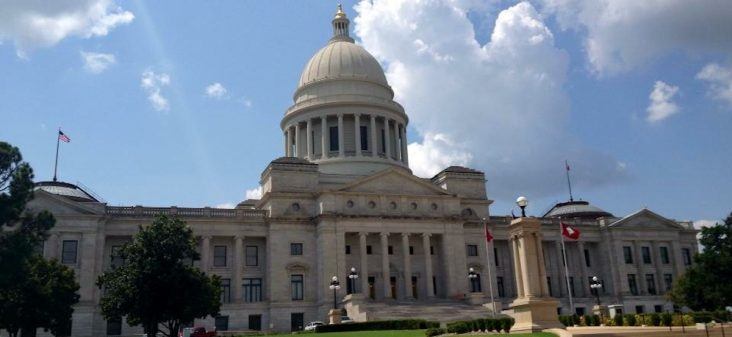Education committees add money to special education as adequacy work continues
by October 3, 2016 4:35 pm 222 views

The House and Senate Education Committees voted to add $30 million over two years to a fund for “catastrophic” special education needs as it prepares the adequacy report that will govern funding for K-12 education over the next two years.
The adequacy report was created as a result of the Supreme Court’s Lake View decision requiring the state to provide an equitable and adequate education to all students. The committee will present the report to Gov. Asa Hutchinson by Nov. 1. The report will be reviewed by him and then voted on during next year’s legislative session.
Committee members voted Monday (Oct. 3) to add $30 million over the next two years – an extra $10 million in 2016-17 and an extra $20 million in 2017-18 – for a fund for catastrophic special education funding. The fund helps school districts pay for very high cost special education students. Districts are reimbursed for the first $15,000, then 80% of the next $15,000 to $50,000, and 50% of the costs between $50,000 and $100,000.
But according to a draft adequacy report, the number of students eligible for the funding has increased from 487 in 2010-11 to 1,136 in 2014-15 as a result of a change in the rubric the Arkansas Department of Education uses to identify eligibility. The previous rubric applied only to students with low IQs. The new rubric includes students with autism or other disabilities who may have high IQs but need supervision. Because of the growth, the fund was $19.31 million short in 2014-15, so school districts were not fully reimbursed their costs.
Rep. Bruce Cozart, R-Hot Springs, House Education Committee chairman, said afterward that the committees looked at the largest education item, per pupil foundation funding, during a work session earlier in the day. That discussion will resume in another work group meeting Oct. 10. Cozart said he created his own foundation funding formula this weekend – about a 1.15% increase, or $75 per pupil – as a starting point for the members. He said the eventual increase will be between 1-2%. Cozart said overall spending for education would be affected by the $30 million addition, which he described as a “chunk of change.”
“It’s going to hurt,” he said.
The funding discussion occurs at a time when money is expected to be tight. The state next year begins paying 5% of the cost of the private option, the program that purchases private health insurance for lower income Arkansans. Meanwhile, grocery taxes are scheduled to be cut alongside the ending of the state’s desegregation funding to schools in Pulaski County. Furthermore, Hutchinson has plans for additional tax cuts, which Cozart said should be considered in relation to how they affect schools.
“We don’t want to affect education by cutting taxes,” he said.
He said legislators are considering pulling transportation funding out of the education funding matrix and placing it in its own category based on route miles or another factor. Transportation is now funded on a per pupil basis, so it easily covers costs for some districts but not for others.
The committees also voted to change its definition of “adequacy” to include the words “sufficient education and preparation to enable each student to become career-ready.”
Rep. John Walker, D-Little Rock, said the addition did not represent enough of a change because it doesn’t ensure all students have a similar opportunity for an education. Without that equal opportunity, the state does not meet the definition of adequacy, he said.
